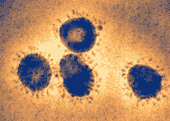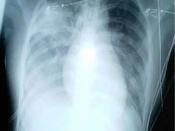On April 3 2003, a man aged 52 years old, started to feel sick. His symptoms included fatigue, headache, chills, and sweating. A few days later, he had diarrhea and went to the emergency department of the nearest hospital. A fever of 100.7 degrees F was recorded, but no diagnostic testing was performed. His symptoms got worse. He visited the hospital again with dehydration, cough, and severe shortness of breath. Soon after, he was admitted to the hospital again with a diagnosis of a typical pneumonia and possible SARS. The man was dying, and no medicine was able to help him. During November 1, 2002 to April 23, 2003, a total of 4288 SARS cases were reported to World health organization from 25 countries, including the United States. Today I would like to inform you about what SARS is, how it spreads, the symptoms, the treatments, and how to protect yourself.
SARS is a new disease. SARS stands for Severe Acute Respiratory Syndrome. SARS is a respiratory illness that has recently been reported in Asia, North America, and Europe. Scientists at the Center of disease Control and Prevention have detected a previously unrecognized corona virus in patients with SARS. The new corona virus is the leading hypothesis for the cause of SARS.
The primary way that SARS appears to spread is by close person to person contact. Most cases of SARS have involved people who cared of or lived with someone with SARS or had direct contact with infectious material from a person who has SARS. Potential ways in which SARS can be spread include touching the skin of other people or objects that are contaminated and then toughing your eyes nose or mouth. This can happen when someone who is sick with SARS coughs or sneezes germs onto...



Its a really good essay
I think the Author was really into it, it was almost like i was there.
1 out of 2 people found this comment useful.